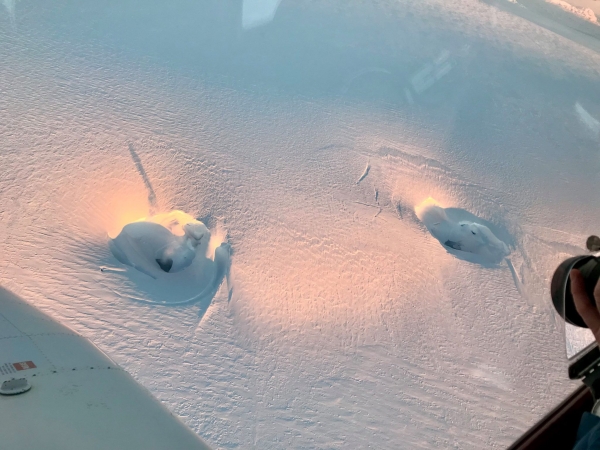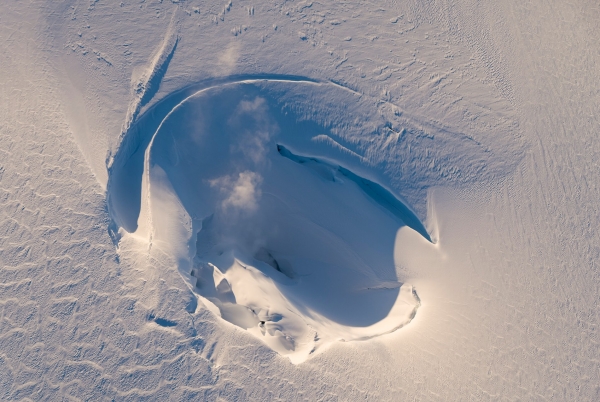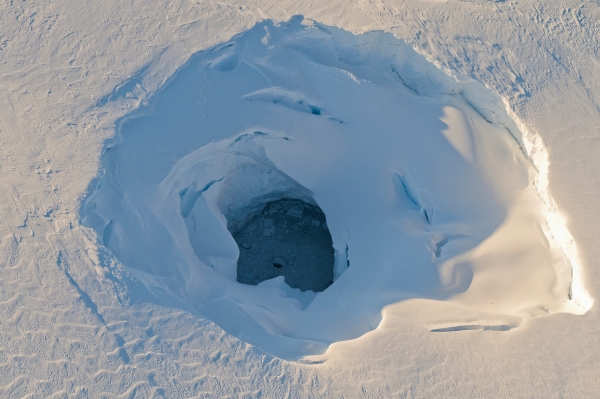The monster volcano Bárðarbunga continued to tremble over the weekend. A 3.5 magnitude quake was detected in the east-southeast part of the caldera early Saturday morning. The epicenter of the quake was at a significant depth of 11 km (6.8 mi). The quake was not accompanied by a swarm of smaller tremors.
Read more: Quick primer on Bárðarbunga, Iceland's most powerful volcano
Bárðarbunga has been showing significant activity in recent months. Several powerful earthquake swarms have shaken the volcano, including the largest quake detected since the end of the last eruption from the Bárðarbunga system, the Holuhraun eruption of 2014-15. According to the seismologists at the Icelandic Meteorological Office there are no signs of growing volcanic activity, as the weekend's tremor was a continuation of activity which has been ongoing since the end of the Holuhraun eruption.
Activity shows no signs of slowing down
While there are no signs of imminent volcanic activity there are also no signs of decreasing activity in the volcano. Significant geothermal activity continues in the volcano's caldera, according to recent aerial studies of the ice cap which covers the volcano. A spike in geothermal activity in a volcano can only be caused by magma being thrust closer to the surface.
Prior to the beginning of the 2014-15 Holuhraun eruption scientists knew of on geothermal areas in the Bárðarbunga caldera, but in the lead up to the eruption two large ice cauldrons were formed in the ice cap over the Bárðarbunga, as geothermal activity in the caldera increased. The activity has by now managed to melt two holes through the ice cap, exposing the ground beneath the glacier. These cauldrons have filled with snow in past years, but this year the two cauldrons remain completely exposed as the geothermal activity melts any snow and ice.
These photos, taken by the environmental activist and explorer Tómas Guðbjartsson show what the ice cauldrons looked like over the weekend:



The monster volcano Bárðarbunga continued to tremble over the weekend. A 3.5 magnitude quake was detected in the east-southeast part of the caldera early Saturday morning. The epicenter of the quake was at a significant depth of 11 km (6.8 mi). The quake was not accompanied by a swarm of smaller tremors.
Read more: Quick primer on Bárðarbunga, Iceland's most powerful volcano
Bárðarbunga has been showing significant activity in recent months. Several powerful earthquake swarms have shaken the volcano, including the largest quake detected since the end of the last eruption from the Bárðarbunga system, the Holuhraun eruption of 2014-15. According to the seismologists at the Icelandic Meteorological Office there are no signs of growing volcanic activity, as the weekend's tremor was a continuation of activity which has been ongoing since the end of the Holuhraun eruption.
Activity shows no signs of slowing down
While there are no signs of imminent volcanic activity there are also no signs of decreasing activity in the volcano. Significant geothermal activity continues in the volcano's caldera, according to recent aerial studies of the ice cap which covers the volcano. A spike in geothermal activity in a volcano can only be caused by magma being thrust closer to the surface.
Prior to the beginning of the 2014-15 Holuhraun eruption scientists knew of on geothermal areas in the Bárðarbunga caldera, but in the lead up to the eruption two large ice cauldrons were formed in the ice cap over the Bárðarbunga, as geothermal activity in the caldera increased. The activity has by now managed to melt two holes through the ice cap, exposing the ground beneath the glacier. These cauldrons have filled with snow in past years, but this year the two cauldrons remain completely exposed as the geothermal activity melts any snow and ice.
These photos, taken by the environmental activist and explorer Tómas Guðbjartsson show what the ice cauldrons looked like over the weekend:










